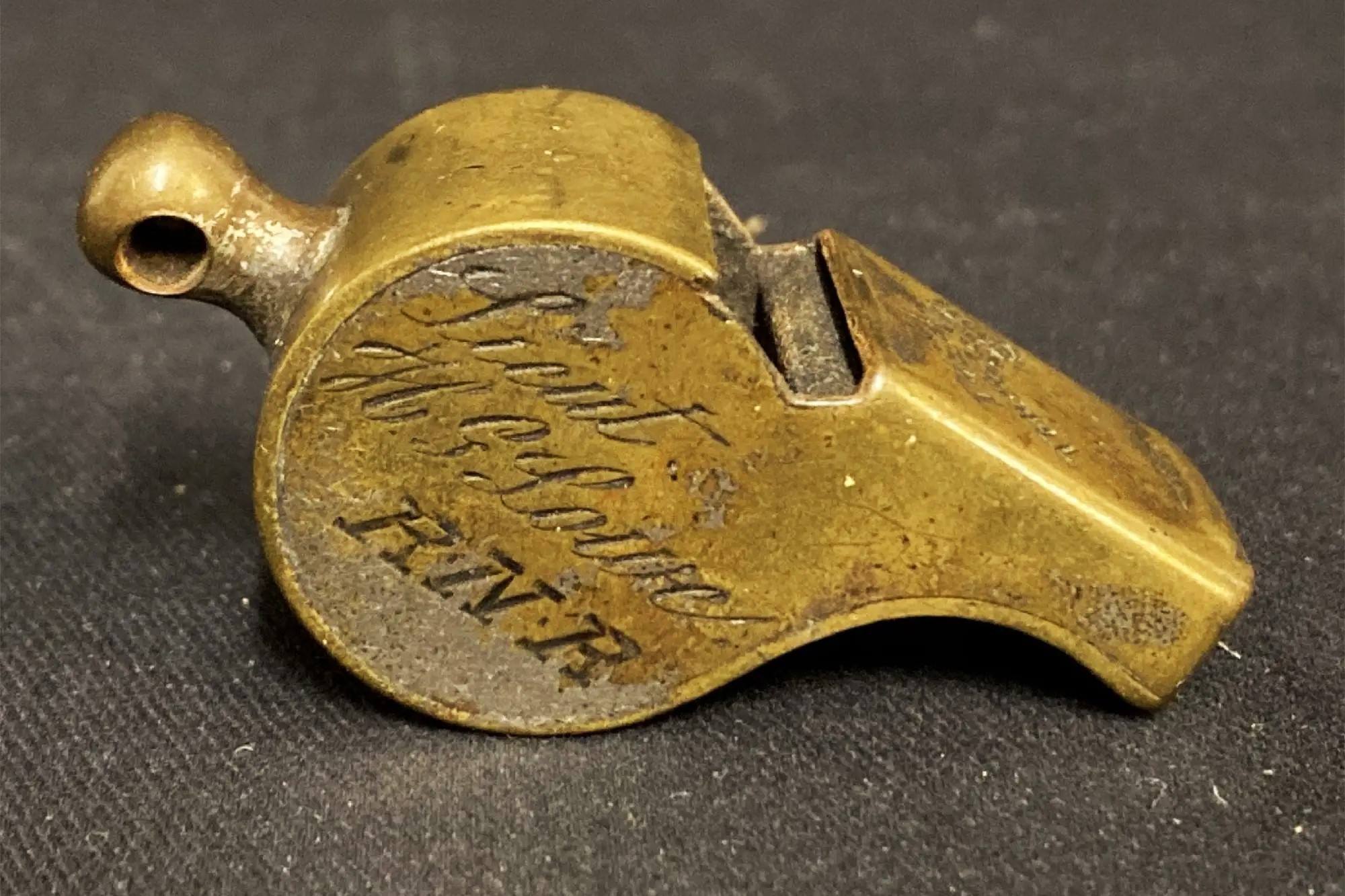
Did you know the Titanic had a whistle that could be heard from miles away? This iconic ship, known for its tragic end, had many fascinating features. Among them, the Titanic whistle stands out. It wasn't just any whistle; it was a powerful steam whistle that played a crucial role in navigation and communication. Imagine the sound piercing through the foggy Atlantic night, alerting nearby vessels of its presence. This whistle, mounted on the ship's forward funnel, could be heard up to 11 miles away under the right conditions. Let's dive into 36 intriguing facts about this remarkable piece of maritime history.
Key Takeaways:
- The Titanic's whistle was a marvel of engineering, with three steam-powered brass whistles that could be heard from 11 miles away. It played a crucial role in maritime communication and was a symbol of the ship's grandeur.
- The whistle's legacy lives on, as it was recovered from the wreckage in 1987 and is now part of the Titanic Artifact Exhibition. Its deep tone has inspired artists and continues to captivate people worldwide.
The Titanic's Whistle: A Marvel of Engineering
The Titanic's whistle was more than just a signal device; it was a marvel of early 20th-century engineering. Here are some fascinating facts about this iconic feature of the legendary ship.
- The Titanic had three whistles, each mounted on the ship's forward funnel.
- These whistles were steam-powered, using the ship's boilers to generate the necessary pressure.
- Each whistle was made of brass, a material chosen for its durability and resistance to corrosion.
- The whistles could be heard from a distance of up to 11 miles under optimal conditions.
- They were designed to produce a deep, resonant tone, which was both a warning signal and a symbol of the ship's grandeur.
The Role of the Whistle in Maritime Communication
Whistles played a crucial role in maritime communication, especially for a ship as large as the Titanic. They were used for various purposes, from signaling other vessels to coordinating onboard activities.
- The Titanic's whistle was used to signal the ship's departure from Southampton on April 10, 1912.
- It was also used to communicate with nearby ships, especially in foggy conditions where visibility was poor.
- The whistle's tone was unique, allowing other ships to identify the Titanic even without visual confirmation.
- Crew members used the whistle to signal shifts and changes in watch duty.
- In emergencies, the whistle could be used to alert passengers and crew to potential dangers.
The Whistle's Design and Construction
The design and construction of the Titanic's whistle were feats of engineering. Every detail was meticulously planned to ensure it met the ship's needs.
- The whistles were designed by the White Star Line's engineering team.
- Each whistle measured approximately 9 feet in length.
- They were mounted on the forward funnel to maximize sound projection.
- The whistles were tested extensively before being installed on the ship.
- Engineers ensured the whistles could withstand the harsh conditions at sea, including high winds and saltwater exposure.
The Whistle's Role During the Titanic's Fateful Voyage
During the Titanic's ill-fated maiden voyage, the whistle played a significant role in the events leading up to the disaster.
- The whistle was used to signal the ship's departure from Queenstown, Ireland, on April 11, 1912.
- It was sounded several times during the voyage to communicate with other ships in the vicinity.
- On the night of April 14, 1912, the whistle was used to signal the ship's approach to an iceberg field.
- After the collision with the iceberg, the whistle was sounded to alert nearby vessels to the Titanic's distress.
- Despite the efforts, the whistle's sound was not heard by any ships close enough to provide immediate assistance.
The Whistle's Legacy and Historical Significance
The Titanic's whistle has become an enduring symbol of the ship's legacy. It represents both the grandeur of the Titanic and the tragedy of its sinking.
- The whistle was recovered from the wreckage of the Titanic in 1987.
- It is now part of the Titanic Artifact Exhibition, where it is displayed to the public.
- The whistle has been restored to its original condition, allowing visitors to hear its iconic tone.
- It serves as a reminder of the technological advancements of the early 20th century.
- The whistle is also a symbol of the human stories connected to the Titanic, from the crew who operated it to the passengers who heard its sound.
Fun Facts About the Titanic's Whistle
Beyond its practical uses, the Titanic's whistle has some fun and lesser-known facts that add to its mystique.
- The whistle was featured in the 1997 film "Titanic," directed by James Cameron.
- It has been replicated in various Titanic-themed attractions and museums around the world.
- The whistle's sound has been used in numerous documentaries and historical reenactments.
- It is one of the most recognizable sounds associated with the Titanic.
- The whistle's deep tone has inspired musicians and artists, who have incorporated it into their works.
The Whistle in Modern Times
Even today, the Titanic's whistle continues to captivate people around the world. Its legacy lives on in various forms.
- The whistle has been digitally recreated for use in virtual reality experiences.
- It is featured in educational programs about the Titanic and maritime history.
- The whistle's design has influenced modern ship whistles, which still use similar principles.
- It remains a popular subject of research and study among historians and engineers.
- The whistle's story is a testament to the ingenuity and craftsmanship of the early 20th century.
- It serves as a poignant reminder of the Titanic's tragic voyage and the lives lost on that fateful night.
Final Thoughts on Titanic Whistle
The Titanic whistle isn't just a piece of metal; it's a symbol of a bygone era. This whistle, which once echoed across the Atlantic, now serves as a reminder of the ship's grandeur and the tragic fate that befell it. Knowing these 36 facts about the Titanic whistle gives us a deeper appreciation for the ship's history and the people connected to it. From its design to its role during the disaster, each detail adds a layer to the Titanic's story. Whether you're a history buff or just curious, these facts offer a glimpse into the past. So next time you hear about the Titanic, remember the whistle and the stories it carries. It’s a small piece of a larger puzzle, but it helps keep the memory of the Titanic alive.
Frequently Asked Questions
Was this page helpful?
Our commitment to delivering trustworthy and engaging content is at the heart of what we do. Each fact on our site is contributed by real users like you, bringing a wealth of diverse insights and information. To ensure the highest standards of accuracy and reliability, our dedicated editors meticulously review each submission. This process guarantees that the facts we share are not only fascinating but also credible. Trust in our commitment to quality and authenticity as you explore and learn with us.


